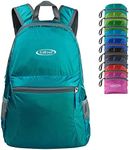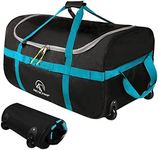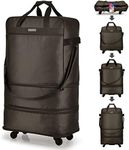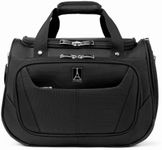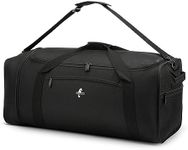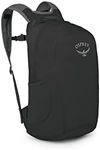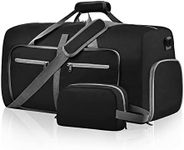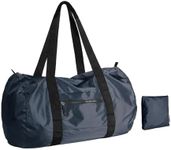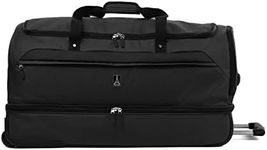Buying Guide for the Best Foldable Travel Bag
Choosing a foldable travel bag is all about finding the right balance between portability, capacity, and durability. These bags are designed to be lightweight and compact when not in use, making them perfect for extra storage on trips or as a backup bag. To pick the best one for your needs, it's important to consider how you plan to use it—whether for short weekend getaways, as an extra bag for souvenirs, or for gym and daily errands. Understanding the key features will help you select a bag that fits your travel style and personal preferences.CapacityCapacity refers to how much the bag can hold, usually measured in liters. This is important because it determines how much you can pack inside. Smaller bags (under 20 liters) are great for day trips or as a gym bag, while medium sizes (20-40 liters) work well for overnight stays or as a carry-on. Larger bags (over 40 liters) are suitable for longer trips or if you need to carry bulky items. Think about what you usually pack and choose a size that matches your typical load without being too bulky when folded.
MaterialThe material of a foldable travel bag affects its weight, durability, and water resistance. Common materials include nylon, polyester, and ripstop fabrics. Lightweight materials are easier to carry and pack down smaller, but may not be as durable. Heavier or reinforced fabrics offer better protection and last longer, especially if you plan to carry heavier items. If you expect to use the bag in wet conditions, look for water-resistant or waterproof materials. Choose a material that matches your expected use—lightweight for occasional or emergency use, and tougher fabrics for frequent or heavy-duty travel.
Foldability and Pack SizeFoldability describes how small the bag can be packed when not in use. Some bags fold into their own pocket or a small pouch, making them easy to store in your main luggage or even a handbag. The smaller the packed size, the more convenient it is to carry as a backup. If you want a bag that you can always have on hand just in case, look for one that folds down very compactly. If you plan to use it regularly, a slightly larger packed size may be acceptable for added comfort or features.
WeightThe weight of the bag itself matters, especially if you want to keep your luggage as light as possible. Lighter bags are easier to carry and add less to your overall load, but may sacrifice some durability or structure. Heavier bags might offer more support or padding, which can be useful if you plan to carry heavier items. Consider how much weight you are comfortable carrying and whether you prioritize lightness or sturdiness.
Compartments and OrganizationCompartments and pockets help keep your belongings organized. Some foldable bags are very simple with one large compartment, while others offer multiple pockets, shoe compartments, or even hidden security pockets. If you like to keep things separated—like shoes from clothes or wet from dry items—look for bags with more organization options. If you prefer simplicity and want to keep the bag as light as possible, a single-compartment design may be best.
Straps and Carry OptionsThe type and quality of straps affect how comfortable the bag is to carry. Some foldable bags have basic handles, while others offer padded shoulder straps or even backpack-style straps. If you plan to carry the bag for longer periods or over longer distances, look for padded or adjustable straps for comfort. If you only need it for short distances or as an extra bag, simple handles may be enough.
Durability and StitchingDurability is determined by the quality of the fabric, zippers, and stitching. Reinforced seams and strong zippers help the bag withstand repeated use and heavier loads. If you expect to use the bag frequently or for carrying heavier items, pay attention to these details. For occasional or emergency use, basic construction may be sufficient.
